John Hurrell – 29 June, 2016
Culbert and Barber make a nice pair in this show because individually, each has a strong indomitable quality that staunchly asserts itself. Somehow they happily co-exist and enhance each other. Together they balance out.
Auckland
Bill Culbert and Andrew Barber
The Key to the Fields
24 June - 23 July 2016
A lovely collaboration occurs here in this deft partnership between Andrew Barber and Bill Culbert, a minimalist installation where Barber activates the floor and Culbert the walls and the parts of shiny floor immediately below.
Barber has gridded up the floor area with a diamond/tilted square formation where two alignments - of three thick sprayed lines - alternate. The fuzzy patterned floor looks related to those rectangular textured industrial steel plates you discover on the footpath (covering manholes) in big cities.
The three curved black sprayed lines traversing each square, are done by hand and unique, while the collective overall effect of the swelling undulating squares is disconcerting. The twisting bulging ripples make you slightly queasy, and from certain angles the surface looks like a woven kete.
In front of the doorway where the two galleries meet, is a fluorescent tube /chair work by Culbert, the blearing vertical line reflected in the floor. The back of the seat has three black curved horizontal bands, these forms being repeated in Barber’s holistic design. The chair seems to have sprung out of a sea of arabesques; vertically ejected.
On the far wall behind it is another Culbert contribution, an arrangement of four thick translucent empty oil containers, horizontally pierced by another glowing fluorescent tube - that blurrily shimmers on (or in) the floor below.
On Gallery Two’s adjacent long wall, opposite the windows, the horizontal plane is lit up by a very bright spot that bathes sixteen skeletal wire cones. These are the remnants of lampshades that have had their fabric removed so that the frame/armatures (about five sizes) cast fascinating shadows on the wall. These extend at different angles and lengths, according to their distance from and height above (or below) the lamp of the projecting spot. None of the cone tips (bulb rings) face the beam source directly, its light being projected at them from one side.
What’s remarkable about them is their spatial ambiguity. It is hard to tell what parts of the shadow/wire forms are closest. This is because they seem to flip inside out; optically they are quite confusing.
In Gallery One there is also one other Culbert work, one that has radiating light from a bulb positioned in front of a suspended and tilted glazed window frame, that presents itself as a bullet-shaped glowing form. More importantly it also casts dramatic shadows from its frame and cross-batons onto the gallery wall behind.
These shadows are very different from the delicate traceries of Shade Shadow, because overall (depending on the time of day) Gallery One is darkened like a cave, while the shadows from the Falling Window frame are thicker and more dominant. Consequently the reflections in the window glass - from the golden filament inside the clear bulb inside the outer glass shell - sparkle. The evanescent twinkling brings a different sort of intimate presence to the space. It is more celebratory in mood - Christmasy even - unlike the harsh fluorescent tubes and bright spotlit wall.
The title of this show references Magritte’s 1936 painting of the same name, showing a window with broken glass where the smashed shards carry an image of the outside view of fields - that we see through the hole. With Culbert’s piece we look at and through the (intact) glass. They happily co-exist unbroken.
Culbert and Barber make a nice pair in this show because individually, each has a strong indomitable quality that staunchly asserts itself. Somehow they happily co-exist and enhance each other. Together they balance out.
John Hurrell


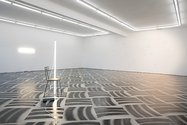
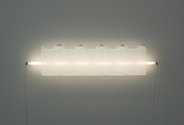
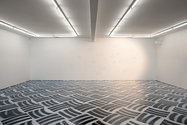
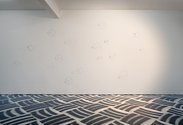
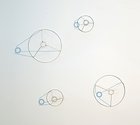
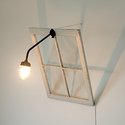
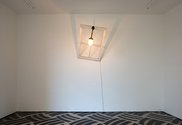
 Two Rooms presents a program of residencies and projects
Two Rooms presents a program of residencies and projects Advertising in this column
Advertising in this column



This Discussion has 0 comments.
Comment
Participate
Register to Participate.
Sign in
Sign in to an existing account.